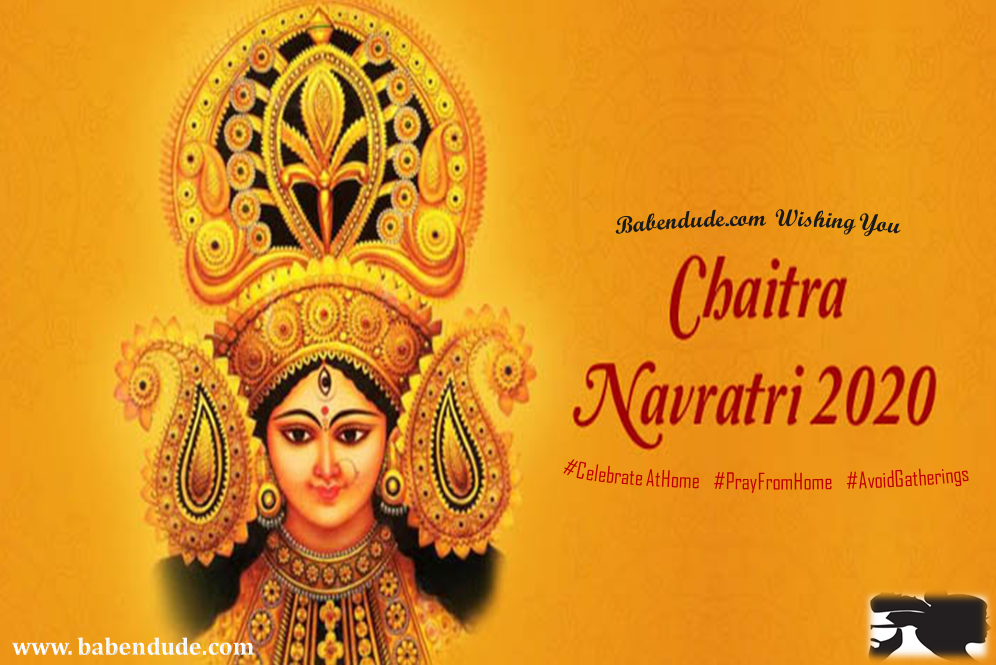Ahead of Chaitra Navratri and Ram Navami, Babendude Team appeals devotees to celebrate the festival at home and avoid visiting a temple or doing religious gatherings. The Government has instructed district magistrates and police authorities to converse with religious leaders and take their help in driving home this message of avoiding any gatherings during this festive week. Chaitra Navratri will take place from March 25 to April 2 and Ram Navami is on April 2.
In the wake of the nationwide lockdown, Temples and Religious Stores are shut.
Why do we celebrate ‘The Festival of Navratri’?
It is considered to be the most auspicious festival in the Hindu calendar when all 9 days of Navratri, different forms of Goddess Durga are worshipped and devotees observe a fast.
Why do we celebrate Ram Navami?
Ram Navami, a pious festival is celebrated on the 9th and last day of Chaitra Navratri. It marks the arrival of Lord Vishnu’s 7th avatar, Rama. Ram Navami is very significant to the Vaishnavite tradition of Hinduism; a lot of devotees celebrate this occasion and worship Lord Rama all around the globe.
Some Vaishnava Hindus visit the temple on this day, some devotees worship at home by washing and clothing the miniature statues of the infant Rama and putting it in a cradle. Followed by Bhajan or kirtan (religious prayers), this ceremony is celebrated with a lot of fervor and joy. Some devotees of Lord Rama also observe fast on this auspicious occasion.
While the festival was originated from the legend of Lord Rama, it also leaves people in awe and admiration for Sita, Hanumana, and Lakshmana for their significant roles and connection to the story of Rama. In different Indian religions as Sita Samahit Sthal (located in Uttar Pradesh), Ayodhya, Rameswaram (Tamil Nadu), Bhadrachalam (Telangana), Sitamarhi (Bihar), and Vontimitta (Andhra Pradesh), rituals and virtues of Ram Navami can be witnessed. In Ayodhya, a lot of devotees take a dip in the sacred Sarayu River before visiting the temple. In some places, people organize chariot processions or Rathyatras, also recognized as Shoba Yatra of Rama, Sita, Hanumana, and Lakshmana. Charity events and communal celebrations are also conducted by various temples and Vaishnava organizations.
ALSO READ- COVID-19 (Coronavirus): All You Need To know
Significance of Ram Navami in Hindu Culture
Celebrated in all splendor and glory, the pious festival of Ram Navami marks the arrival of divine power on the earth. The festival holds a lot of importance in Hindu culture as it is the day when Lord Vishnu took birth as an elder son of Dasaratha, the King of Ayodhya. The devotees of Lord Rama perform rituals and chant prayers and devotional songs to celebrate the day with great fervor and joy. Ram Navami signifies that the birth of Rama was to destroy Ravana’s evil spirit. The religious event symbolizes the power of religion and reflects the eternal battle between good and evil.
It can be concluded that the Hindus have given a status of God to Lord Rama for his divine virtues. The celebration of Ram Navami indicates the destruction of negativity from the world. In an endeavor to eliminate evilness, the devotees of Lord Rama celebrate the occasion to spread positivity and peace everywhere.
,
Coronavirus (Covid-19): Our Mother Earth Is Taking A Break! Are You?

